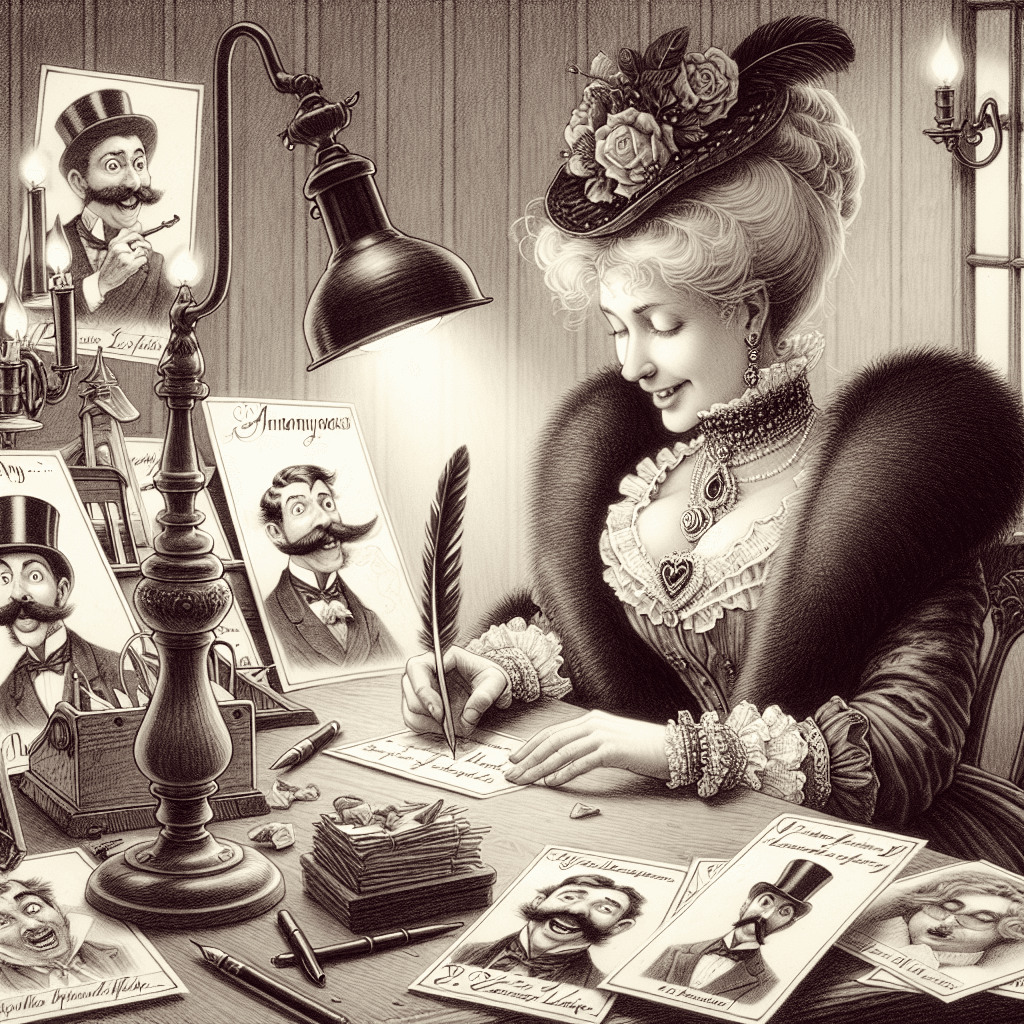Why did Victorians mail each other anonymous insulting Valentine's cards
Forget love poems and paper hearts; for many Victorians, the ultimate Valentine’s tradition was sending a vicious, anonymous card designed to insult your greatest enemy.


Too Long; Didn't Read
TLDR: In the socially repressed Victorian era, people sent cheap, anonymous insulting cards called Vinegar Valentines. It was a rare, socially acceptable way to mock, reject, or criticize someone you disliked without the risk of direct confrontation and consequences.
Vinegar Valentines: Why Did Victorians Mail Each Other Anonymous Insulting Valentine's Cards?
When you picture a Victorian Valentine's Day, you likely imagine elaborate lace, saccharine poetry, and secret admirers. While those certainly existed, there was a far more popular, and much meaner, tradition brewing beneath the surface. For every heartfelt card sent, another, filled with insults and crude caricatures, was also dropped in the post. These were "Vinegar Valentines," and they were a massive social phenomenon. This post delves into the curious history of these cards and explores why a society known for its strict etiquette embraced the art of the anonymous insult.
What Exactly Was a Vinegar Valentine?
Before we explore the "why," let's understand the "what." Vinegar Valentines, also known as "mocking" or "comic" valentines, were the complete opposite of their sentimental counterparts. They were:
- Cheaply Made: Typically printed on a single sheet of thin, inexpensive paper.
- Crudely Illustrated: They featured unflattering, often grotesque, caricatures of the intended recipient.
- Insulting: The accompanying verses were satirical poems that mocked the recipient’s appearance, profession, habits, or social standing. A card might call someone a drunkard, a gossip, or an unwelcome suitor.
- Anonymous: The sender never signed their name, leaving the recipient to guess who held them in such low esteem.
To add a final twist of malice, these cards were often sent with the postage due. In an era before prepaid stamps became standard, the recipient would have to pay the postman for the privilege of being insulted.
The Perfect Storm: Technology and Postal Reform
The rise of the Vinegar Valentine wasn't a random quirk; it was the product of significant societal and technological shifts. Two key developments in the 1840s created the perfect environment for this trend to explode.
The Uniform Penny Post
In 1840, Great Britain introduced the Uniform Penny Post. This revolutionary reform standardized the cost of postage to a single penny for a standard letter sent anywhere in the country. Suddenly, sending mail was affordable for nearly everyone, not just the wealthy. The postal system experienced a massive boom, and sending cards for holidays like Valentine's Day became a widespread practice for all social classes.
Advances in Printing
Simultaneously, new printing technologies like lithography made it possible to mass-produce images and text quickly and cheaply. Factories could churn out thousands of these insulting cards, selling them for a penny or less. This affordability made them an accessible and disposable form of communication, perfect for a fleeting insult.
A Social Safety Valve in a Rigid Society
While technology made Vinegar Valentines possible, it was the strict nature of Victorian society that made them so popular. The Victorian era was characterized by a rigid social hierarchy and an oppressive code of conduct that governed every interaction. Voicing a direct complaint or criticism was often impossible, especially if it was directed at a social superior, a neighbor, or even a persistent but unwanted admirer.
Vinegar Valentines provided a crucial, anonymous outlet for pent-up frustrations. They were a social safety valve, allowing people to:
- Reject Unwanted Suitors: A woman who couldn't politely get a man to leave her alone could send him a card bluntly mocking his advances.
- Criticize Authority: An employee could anonymously mock their pompous boss.
- Settle a Grudge: Neighbors could air petty grievances without a direct, society-shattering confrontation.
- Enforce Social Norms: Cards often targeted people seen as "putting on airs" or behaving outside their perceived social station, serving as a form of public shaming.
In a world where open expression was stifled, the anonymity of the post allowed ordinary people to say the unsayable and punch back against the daily slights and irritations of life.
Not Always a Laughing Matter
It's tempting to view these cards as a historical form of "roasting" or a harmless joke. While some may have been sent in jest, many were genuinely malicious and intended to cause deep emotional pain. Contemporary newspaper reports from the era detail the devastating impact these cards could have. There are accounts of fistfights, legal disputes, and even suicides being linked to the receipt of a particularly cruel Vinegar Valentine. For the Victorians, reputation was everything, and an anonymous, public-facing insult delivered by the postman could be a deeply shaming and traumatic experience.
In conclusion, the strange trend of insulting Valentine's cards was a unique product of its time. It was born from the convergence of affordable mail, mass-production printing, and the intense social pressures of the Victorian era. These cards offer us a rare, unfiltered glimpse behind the prim and proper facade of the 19th century, revealing the everyday resentments, class tensions, and social anxieties that churned beneath the surface. They remind us that for every declaration of love on Valentine's Day, there was once an equally powerful, and far more common, expression of contempt.
More Articles

Why do movie punches sound so much crunchier and louder than real ones?
That sickening, bone-crunching punch you hear in the movies is a lie, and the secret ingredient is probably sitting in your refrigerator right now.

What makes a beer bottle suddenly foam over just from a light tap on top?
It’s not magic, it’s a shockwave; discover the explosive physics that turns a gentle tap on your beer bottle into an instant foamy geyser.

Why do police officers touch the back of a car during a traffic stop?
It’s not a random habit; that simple touch is a calculated, old-school tactic designed to leave a crucial and potentially life-saving piece of evidence behind.